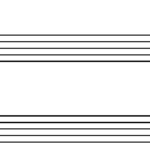String buzz can be one of the most frustrating issues for any guitar player. Often, the culprit lies in the guitar nut, a small but crucial component that guides your strings and affects playability. If you’re noticing unwanted buzzing, especially in the lower frets, you might be wondering if it’s something you can fix yourself or if it’s time to seek professional help at a Guitar Center Repair Center.
Understanding the Guitar Nut and String Height
The nut is located at the headstock end of your guitar’s fretboard, and its primary job is to properly space and elevate the strings as they head towards the tuning pegs. The height of the strings at the nut is critical; if the grooves are too low, the strings will vibrate against the frets, causing that irritating buzz.
Diagnosing Nut Problems
Before you jump into repairs, it’s important to accurately diagnose the problem. String buzz originating from the nut area typically occurs on open strings or the first few frets. If the buzz is present across the entire fretboard, the issue might be with your guitar’s action (string height at the bridge), neck relief, or uneven frets.
DIY String Height Adjustment (Sanding Nut)
If you’ve determined that your nut slots are too low, you can attempt a DIY fix to slightly raise the string height. This involves carefully sanding the nut slots to deepen them.
Here’s a simplified approach, similar to the advice shared in online guitar communities:
- Assess the String Height: Observe how low your strings sit in the nut slots. Ideally, the strings should be just slightly above the level of the frets when played open.
- Prepare Sandpaper: Take a piece of fine-grit sandpaper (around 220 grit). Folding it in half can give you a controlled edge for sanding.
- Carefully Sand the Slots: Gently sand the bottom of the nut slot. Work slowly and in small increments. It’s crucial to remove material gradually and check the string height frequently.
- Test and Repeat: After a few passes of sanding, restring the guitar and check for buzz. Repeat the sanding process as needed, always being cautious not to over-sand.
Note: Adjusting nut height also affects your guitar’s action, so proceed slowly and monitor the overall playability as you make adjustments.
Removing and Replacing a Guitar Nut (with Steam Method)
For more significant nut issues, such as a severely worn or damaged nut, replacement might be necessary. Removing a guitar nut usually involves softening the glue that holds it in place. One common DIY method involves using steam:
Step-by-step Nut Removal
- Steam Application: Boil water in a pot. Once steaming, carefully hold the guitar’s headstock area over the steam. Be cautious to avoid direct contact with the steam, which can be very hot.
- Heat and Pry: Apply steam for about 10 seconds, then gently try to slide a thin, flat tool (like a scraper or knife) under the edge of the nut.
- Repeat as Needed: Alternate between steaming and gently prying. The heat from the steam will weaken the glue. Be patient and avoid forcing the nut, which could damage the surrounding wood.
- Clean the Area: Once the nut is removed, clean any residual glue from the nut slot using fine-grit sandpaper. Be careful not to sand the finish of the headstock.
Installing a New Nut
- Prepare the New Nut: If your new nut is not pre-slotted, you’ll need to file string slots. You can find guides online for proper string spacing and slot depth. For a pre-slotted nut, ensure it’s the correct type and size for your guitar.
- Apply Glue: Use a small amount of wood glue (like Titebond Original) in the nut slot.
- Position and Clamp: Place the new nut into the slot, ensuring it’s correctly positioned and aligned with the fretboard. Clamp it lightly to hold it in place while the glue dries.
- String and Test: Once the glue is dry, restring your guitar and check the string height and playability. You might need to make minor adjustments to the string slots with specialized nut files for optimal performance.
When to Seek Professional Help at a Guitar Center Repair Center
While DIY repairs can be satisfying and cost-effective, there are times when seeking professional assistance is the best course of action. Consider visiting a guitar center repair center if:
- You’re uncomfortable with DIY repairs: Working on your guitar’s nut requires precision. If you’re hesitant or lack experience, professional technicians can ensure the job is done correctly.
- You’re unsure about the problem: If you’re not confident that the nut is the source of the buzz, a professional can diagnose the issue accurately.
- You lack the tools: Proper nut work often requires specialized tools like nut files and precision measuring tools.
- You want guaranteed results: A reputable guitar center repair center typically offers warranties on their repair work, providing peace of mind.
- For complex issues: If you suspect neck or fretboard problems in addition to nut issues, professional assessment and repair are recommended.
Guitar Center repair centers are staffed with experienced technicians who can handle a wide range of guitar repairs, from simple setups to complex structural work. They can accurately assess your guitar’s nut and recommend the best solution, whether it’s a minor adjustment or a complete replacement.
Conclusion
Addressing string buzz at the nut can significantly improve your guitar’s playability and sound. While simple adjustments can be tackled at home, knowing when to seek professional help from a guitar center repair center is crucial. By understanding the function of your guitar nut and the basics of nut repair, you can make informed decisions to keep your instrument playing its best. Whether you choose the DIY route or opt for expert service, resolving nut issues will contribute to a more enjoyable playing experience.

